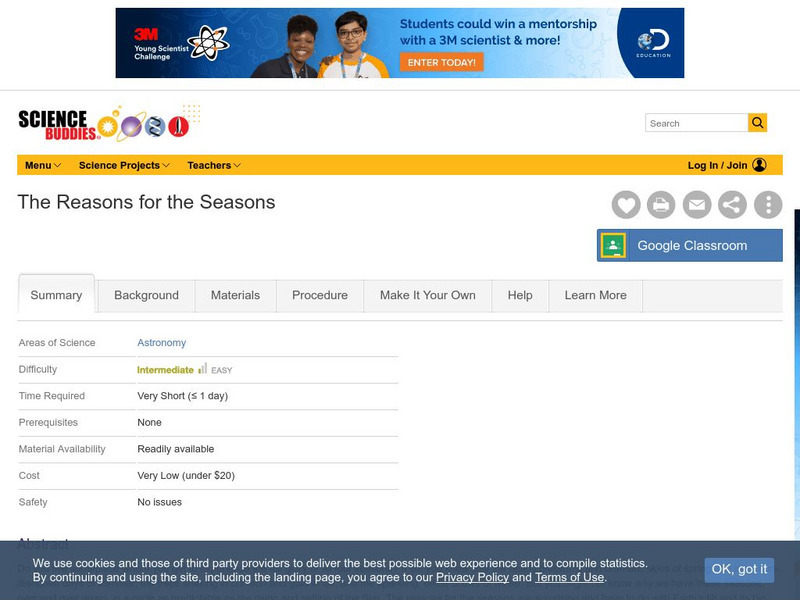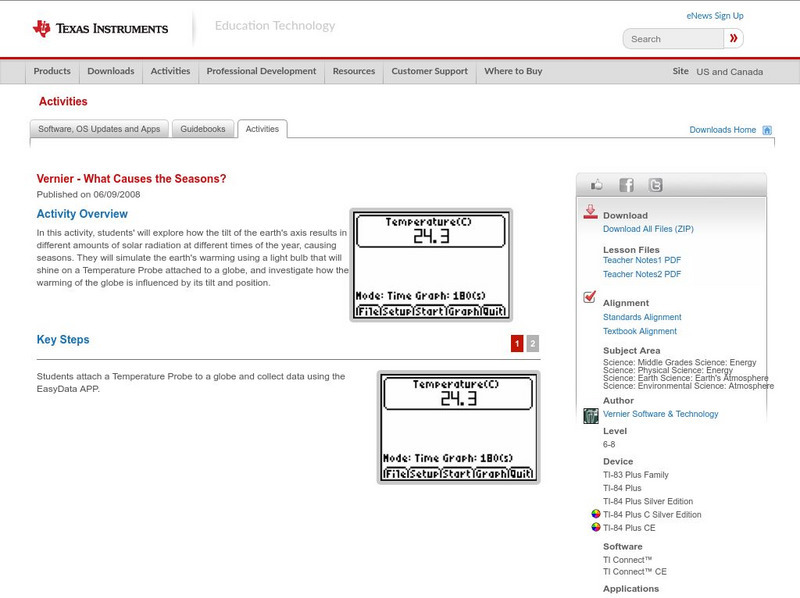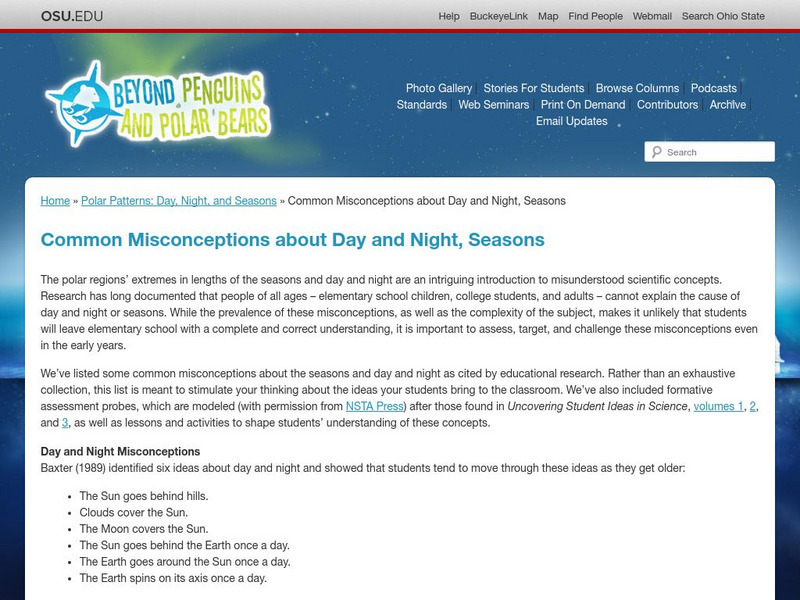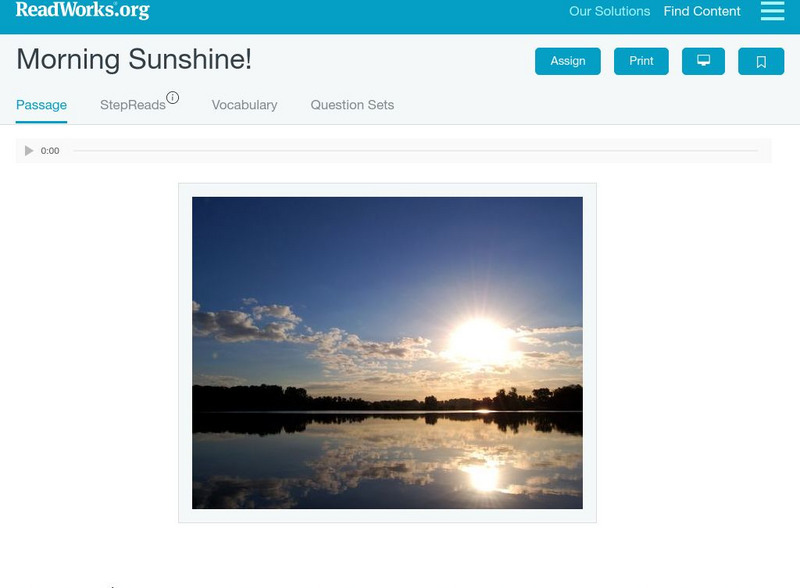Hi, what do you want to do?
Scholastic
Scholastic: Study Jams! Science: Our Solar System: A Day on Earth
A video and a short multiple-choice quiz on how the Earth's tilt on its axis, its rotation, and its orbit around the Sun give us a 24-hour day, a 365-day year, and our seasons.
NASA
National Aeronautics and Space Administration: Scijinks: Seasons
An explanation about the rotation of the Earth and why the Earth has seasons.
Science U
Science U: Reasons for the Seasons
This webpage uses diagrams and video to explain the causes of the seasons.
Sophia Learning
Sophia: Earth and Sun
A slideshow exploring Earth's rotation and revolution around the sun. Learn that because of Earth's axis tilt we experience the seasons!
TED Talks
Ted: Ted Ed: Reasons for the Seasons
Why do some regions experience full-time heat while others are reckoning with frigid temperatures and snow? And why are the seasons reversed in the two hemispheres? Rebecca Kaplan explains how the shape of the Earth's orbit around the...
Science Buddies
Science Buddies: Project Ideas: The Reasons for the Seasons
In this astronomy science fair project, investigate how the earth's axial tilt creates seasons. The Science Buddies project ideas are set up consistently beginning with an abstract, objective, and introduction, followed by a section on...
CK-12 Foundation
Ck 12: Plix: Seasons
[Free Registration/Login Required] View how the axis of rotation causes Earth to have seasons on this site. Also test your knowledge on how the position of Earth and seasons relate with a short quiz.
Texas Instruments
Texas Instruments: What Causes the Seasons?
In this activity, students' will explore how the tilt of the earth's axis results in different amounts of solar radiation at different times of the year, causing seasons. They will simulate the earth's warming using a light bulb that...
CK-12 Foundation
Ck 12: Fifth Grade Science: Earth Science: Earth's Motion in Space
[Free Registration/Login may be required to access all resource tools.] Discusses the motion of the Earth with its day and night cycle, the seasons, the Earth's orbit around the Sun, and its year-long cycle.
Ohio State University
Beyond Penguins and Polar Bears: Common Misconceptions About Day and Night
Misconceptions about the causes of seasons and day and night are common through all ages. Use the information on this site to help your students understand these concepts. Included are links to many resources and lesson plans for...
Curated OER
Weather Dude: The Seasons
Especially for kids, the Weather Dude provides a simple explanation of the seasons. Includes a music clip titled "Circle of Our Four Seasons," and suggested lesson plans and school assignments.
Math Is Fun
Math Is Fun: The Seasons
Learn about the four seasons, when they occur in the northern and southern hemispheres, and why the seasons change as the Earth rotates around the Sun.
ClassFlow
Class Flow: Earth's Movements in Space
[Free Registration/Login Required] This flipchart contains definitions for axis, rotation, revolution explanation of seasons and an assessment using Activotes.
Other
Footprints Science: Seasons
A single animated slide that demonstrates how the alignment of earth causes the summer and winter seasons.
National Museums Liverpool
Liverpool Museums: The Sun Tracker
This simulation allows the user to see the sun's arc in the sky anywhere in the world at any time. By changing the season settings the user can see how seasons affect the height of the sun's arc.
Read Works
Read Works: Morning Sunshine
[Free Registration/Login Required] Students read about how the tilt of the Earth on its axis affects sunrises and sunstes. A question sheet is available to help students build skills in reading comprehension.
TED Talks
Ted: Ted Ed: The Science of the Game of Thrones
The popular television show, Game of Thrones, and the novel series it is based on, A Song of Fire and Ice, take place in another world. Joe Hanson explores possible scientific explanations of the phenomena exhibited on the show. [8:01]
Utah Education Network
Uen: Why Angle Changes Intensity
This hands-on activity will help students understand why summer is hotter than winter.




















